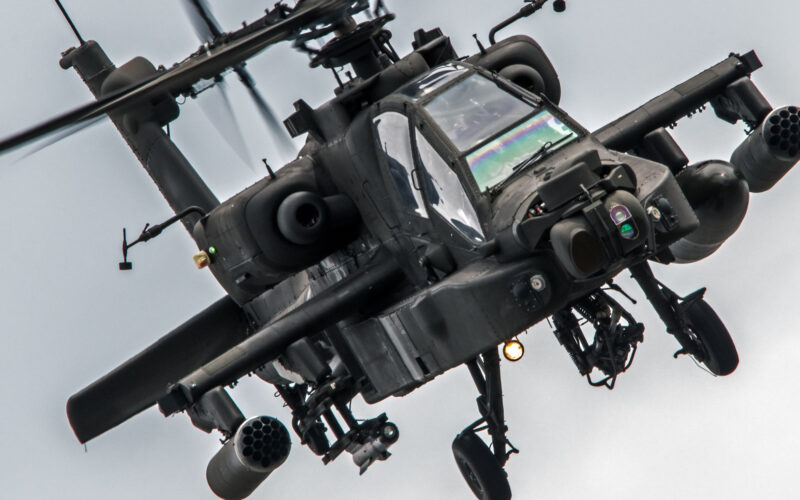Discover the World of Military Helicopters: Types, Uses, and Advanced Technologies

Military helicopters are invaluable assets in today’s defense forces, playing a pivotal role in various military operations. Let’s delve into the fascinating world of military helicopters by exploring the different types available, their diverse applications, and the cutting-edge technologies driving their capabilities.
Types of Military Helicopters:
- Attack Helicopters: Designed for precise engagement of enemy targets, attack helicopters are equipped with advanced weapons systems and have the ability to fly at low altitudes. They provide crucial close air support to ground forces, capable of striking armored vehicles, enemy positions, and high-value targets. Renowned examples include Apache AH-64, Mi-24 Hind, Eurocopter Tiger, and Tiger ARH.
- Transport and Utility Helicopters: Transport and utility helicopters excel in troop transportation and logistical support. They are instrumental in quickly deploying troops to remote or hostile areas, performing insertion and extraction missions, and conducting resupply operations. Notable examples are UH-60 Black Hawk, CH-47 Chinook, and NH90, known for their heavy-lifting capabilities and spacious cabins.
- Reconnaissance and Observation Helicopters: These helicopters specialize in gathering intelligence and providing real-time situational awareness. Equipped with advanced sensor systems, they undertake surveillance missions, monitor enemy movements, and provide vital information to ground commanders. Examples include OH-58 Kiowa, ARH-70 Arapaho, and Aérospatiale SA-341 Gazelle.
- Search and Rescue Helicopters: Dedicated to saving lives in critical situations, search and rescue helicopters are equipped with specialized gear such as hoists and medical facilities. They locate and evacuate injured or stranded individuals efficiently. Prominent models include HH-60 Pave Hawk, Sea King, and AW101 Merlin.
- Military Maritime Helicopters: These helicopters are designed for operations over water and in maritime environments. They feature corrosion-resistant materials, flotation devices, and the ability to operate from naval platforms. They play a crucial role in anti-submarine warfare, search and rescue missions, maritime patrol, and surface surveillance. Notable examples include Sikorsky SH-60 Seahawk, Westland Lynx, and NHIndustries NH90NFH.
- Military Multi-Role Helicopters: Versatile and adaptable, military multi-role helicopters can perform various missions based on operational requirements. They combine transport, attack, or surveillance capabilities, offering cost-effectiveness and flexibility. The Bell UH-1Y Venom and Boeing AH-6 Little Bird are among the notable examples.
- Military Training Helicopters: These helicopters serve the specific purpose of providing a platform for pilots to learn and refine their skills. They often come with dual controls, advanced flight systems, and simulation capabilities for realistic training scenarios. Examples include Eurocopter EC135, Bell TH-67 Creek, and Leonardo AW119 Koala.
Military Helicopter Uses:
- Troop Transportation: Military helicopters are crucial for swiftly deploying troops to remote or hostile areas, facilitating insertion and extraction missions, and ensuring rapid movement across the battlefield.
- Close Air Support: Attack helicopters work closely with ground forces, providing direct firepower to engage enemy targets, suppress positions, and neutralize armored vehicles, ensuring the safety and success of land troops.
- Reconnaissance and Surveillance: Reconnaissance and observation helicopters play a key role in gathering intelligence and providing real-time situational awareness, aiding ground commanders in decision-making.
- Anti-Submarine Warfare: In maritime operations, military helicopters are vital for anti-submarine warfare, locating and tracking submarines, deploying sonobuoys, and engaging underwater threats with anti-submarine weapons.
- Medical Evacuation: Helicopters equipped for medical evacuation (medevac) are crucial for swiftly transporting injured personnel to medical facilities, providing critical care en route and increasing survival chances for wounded soldiers.
Advanced Technologies in Military Helicopters:
- Advanced Avionics Systems: Modern military helicopters feature integrated flight control systems, glass cockpit displays, and digital instrumentation, enhancing pilot situational awareness, flight control, and information management.
- Weapons and Targeting Systems: Military helicopters employ advanced precision-guided missiles, rockets, and gun systems, enabling accurate engagement of targets and maximum damage to enemy positions. Night vision technology further enhances their capabilities in low-light or nighttime operations.
- Stealth and Survivability Enhancements: To operate in hostile environments, military helicopters incorporate radar cross-section reduction techniques, stealthy materials, and defensive countermeasures like flares, chaff, and electronic warfare systems to counter incoming threats.
- Engine and Rotor Technologies: Advancements in engine and rotor technologies have significantly improved performance, efficiency, maneuverability, stability, and reduced vibration, enhancing overall flight capabilities.
By understanding the various types of military helicopters, their uses, and the advanced technologies driving their capabilities, we gain insight into the crucial role these helicopters play in modern defense forces.
